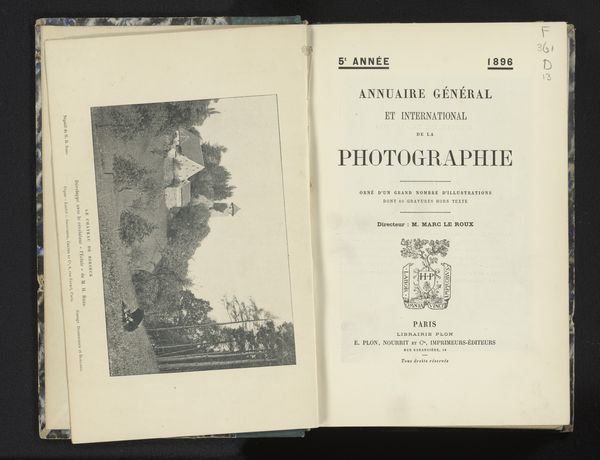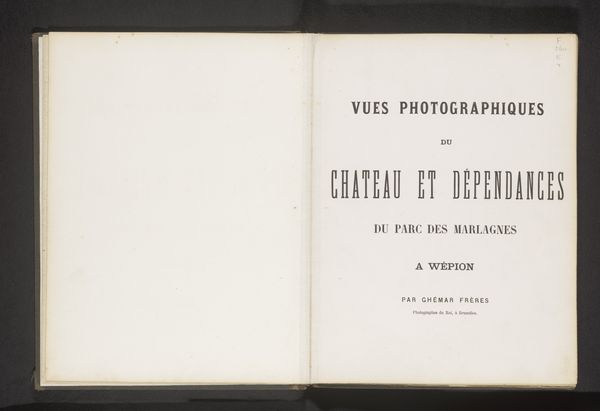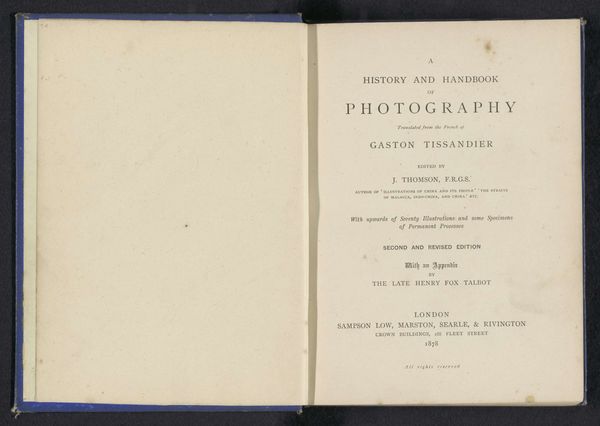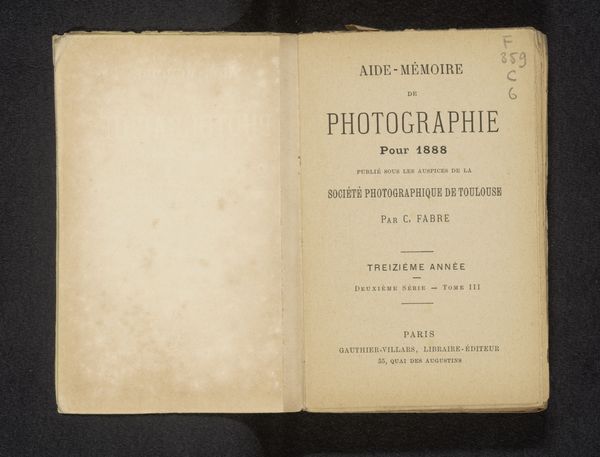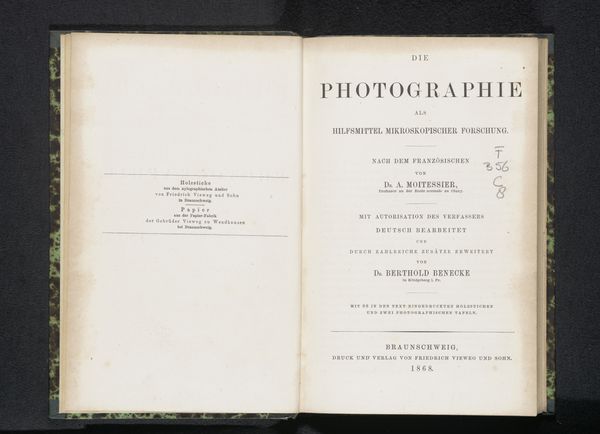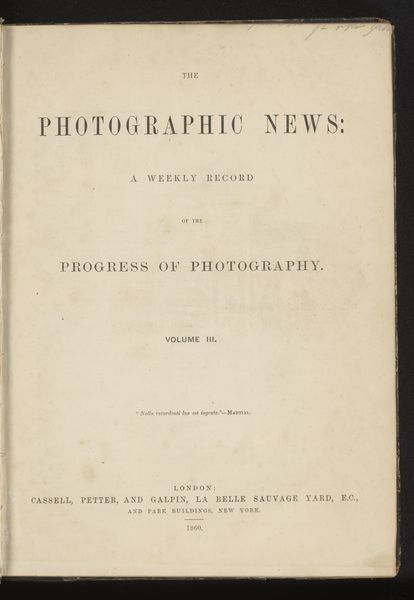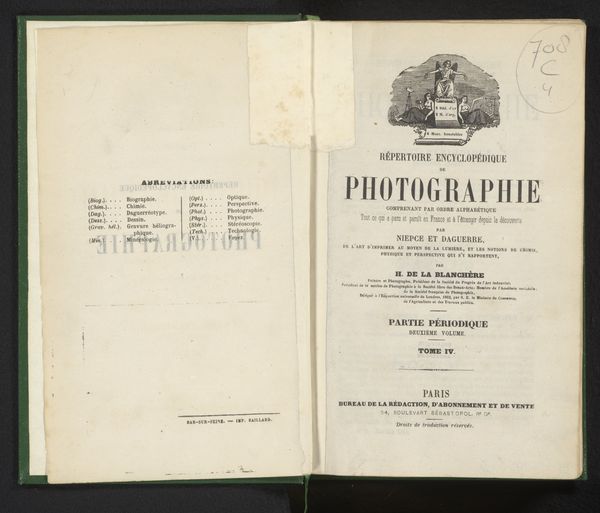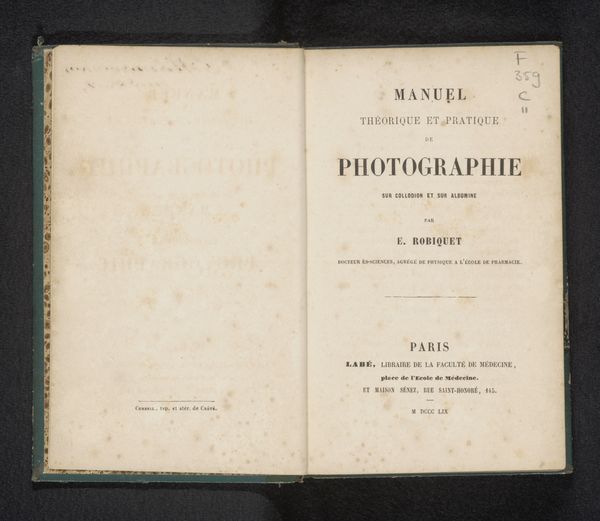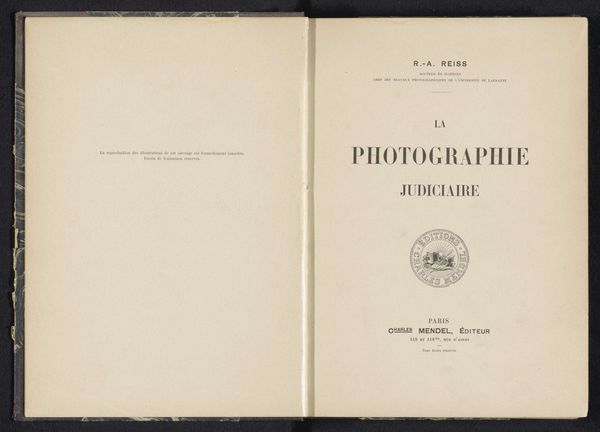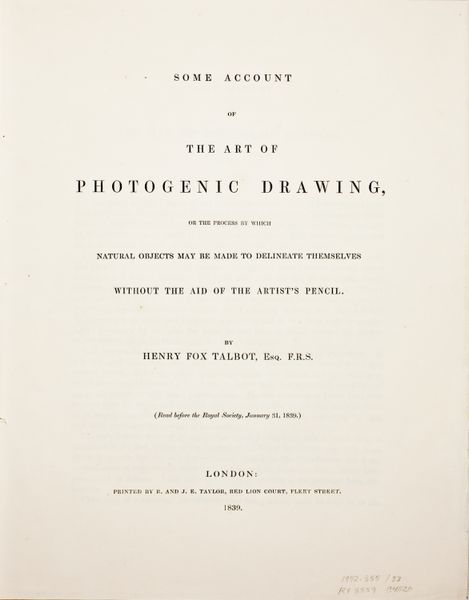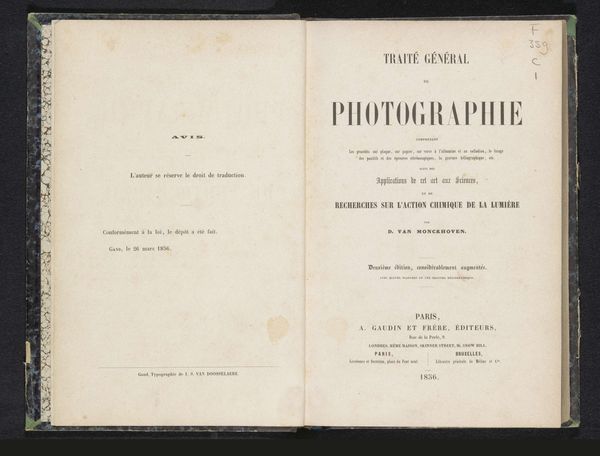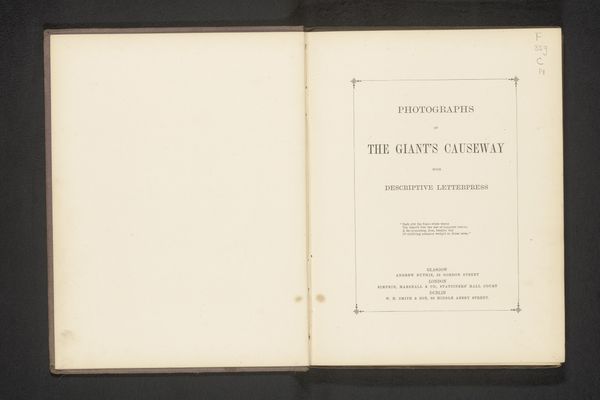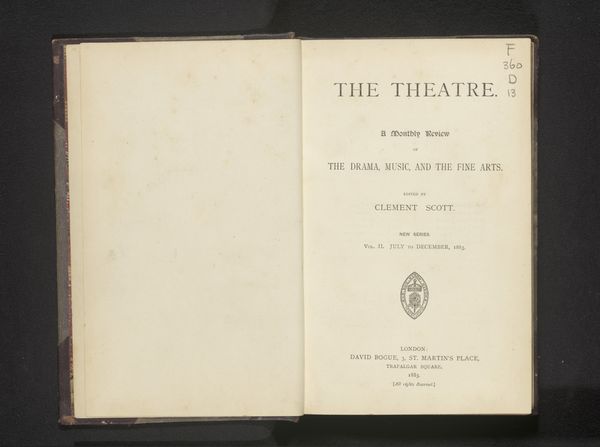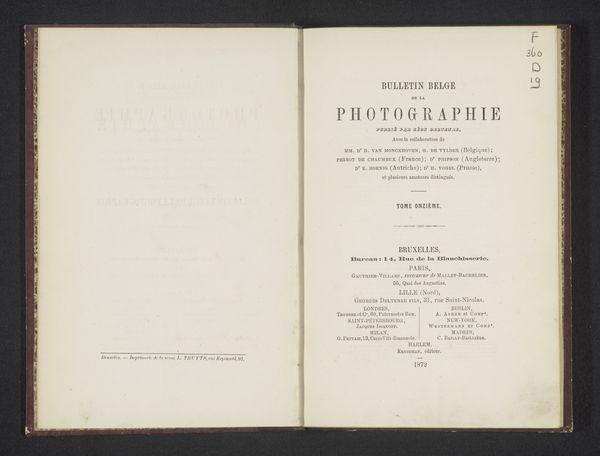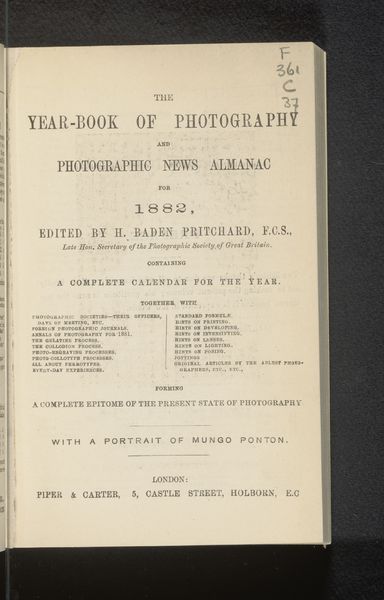
The cabinet portrait gallery : reproduced from original photographs by W. and D. Downey Second Series 1891
0:00
0:00
print, photography, photomontage
#
portrait
#
aged paper
#
homemade paper
#
paperlike
# print
#
sketch book
#
photography
#
journal
#
photomontage
#
thick font
#
handwritten font
#
classical type
#
thin font
#
historical font
Dimensions: height 250 mm, width 208 mm, thickness 40 mm
Copyright: Rijks Museum: Open Domain
Curator: Before us, we have "The Cabinet Portrait Gallery: Reproduced from Original Photographs by W. and D. Downey, Second Series," printed in 1891 by Cassell & Company. It’s a fascinating glimpse into the late Victorian era’s approach to portraiture, through the then-relatively new medium of photography. Editor: The page certainly has an austere and aged feel to it. It reminds me of old manuscripts, thick with secrets. The tight typography lends it an almost clinical tone, despite being an advertisement. Curator: Let’s look at the means of production. The title page immediately asserts “Reproduced from Original Photographs” – highlighting the importance of photography as the primary process. The involvement of W. and D. Downey as photographers speaks volumes. Their studio likely churned out these cabinet portraits. Editor: The symbolism is thick here. "Cabinet Portrait Gallery" evokes intimacy and containment, hinting at how portraits acted as miniature worlds to be possessed and closely studied. Each portrait a symbol, perhaps? Curator: Definitely, but also as commodity! The title’s emphatic clarity and even the paper itself speak to an age consumed with categorization. These reproduced photographs offered a new means to acquire status. Consider the choice to distribute the portfolio through Cassell & Company— they operated globally at the time. Editor: Right, these aren't just representations of individuals, but rather stand-ins for concepts. This is a gallery contained within a book. And look at the way they highlight London, Paris and Melbourne - capitals of civilisation and sophistication at the time. There's cultural messaging. Curator: The aesthetic experience for those interacting with photography as a reproducible asset and, ultimately, collectible matter in its own right is also critical. Were the laborers producing this paid fairly? How were these photographers interacting with rapidly industrializing markets of labor? Editor: An important reflection. I think ultimately it presents a clear statement that portraiture was taking on symbolic power as an agent of broader social aspirations, a mirror of cultural identity at a particular moment in history. Curator: Indeed. This unassuming title page invites many fascinating interpretations on photography and social order during this important transitional period.
Comments
No comments
Be the first to comment and join the conversation on the ultimate creative platform.
